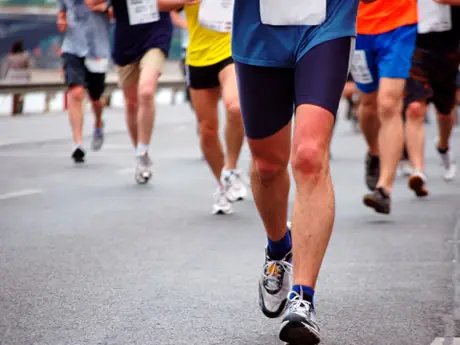
Ever been told to stretch to prevent an injury? What about taking deeper breaths to get in more oxygen? From stretching to lungs and injuries to estrogen, there are many mythconceptions about running. And then there are things that few people know. Here are six interesting things that you don't know about running that can unlock the doors to your running success.
1. Stretching is not going to prevent you from getting injured.
Have you ever run with a dog or watched a horse race? If you have, you probably noticed something interesting—none of these animals stretch before or after they run. Stretching before a workout seems to be something that only humans do.
Whether stretching can prevent injuries depends on the type of activity you're doing and the type of injury you're trying to prevent.
If the activity includes explosive or bouncing movements, like those in volleyball, basketball, and plyometric exercises, research has shown that stretching can reduce injuries by increasing the compliance of your tendons and improving their ability to absorb energy.
However, for low-intensity activities that don't include bouncing movements, like running, cycling, and swimming, research has shown that stretching doesn't prevent injuries because you don't need very compliant tendons for those activities.
In regard to the type of injury, stretching can prevent muscle injuries, such as sprains and strains, but not bone or joint injuries. Bone and joint injuries, which are common among runners, are caused by increasing the training load too much too quickly.
The only documented benefit of stretching is to improve functional range of motion—flexibility—which is best accomplished when you stretch apart from the workout.
2. If you want to become a better runner, you need to run more than you are.
If you want to become a better runner, the first step is running more. The number of miles (or amount of time) you run each week, every week, is the most important part of becoming a better runner. I can't emphasize this enough.
Running more stimulates many physiological, biochemical, and molecular adaptations.
For starters, it increases blood volume. A greater amount of blood circulating in your body means a greater number of red blood cells, which transport oxygen. Inside the red blood cells is a protein called hemoglobin, which carries oxygen to your working muscles. These changes to your blood improve your blood vessels' ability to transport oxygen.
It also promotes better fuel storage. Running lots of miles stimulates the storage of more fuel (glycogen) in your muscles and increases your body's use of fat so that your muscles spare your reserved glycogen.
Running promotes more efficient transport of oxygen. When you run a lot, your body creates more capillaries surrounding your muscle fibers. More capillaries mean a more rapid diffusion of oxygen into your muscles.
Running also improves the ability to produce energy. Through the complex activation of gene expression, running increases how many mitochondria you have in your muscles and the number of aerobic enzymes contained within them. That combination increases your muscles' capacity to produce energy aerobically.
Running more also allows you to see and experience places and things you wouldn't normally get to and gives you a chance to discover things about yourself, including discipline, courage and the ability to meet a challenge.
Always increase your running mileage systematically and with reason behind it. Be careful because you can easily get injured if you increase your weekly mileage too quickly.
More: Should You Run by Minutes or Miles?
3. Running injuries have little to do with the shoes on your feet.
Unless you're wearing a shoe that is completely wrong for your foot type and running mechanics—for instance, wearing a cushioning shoe when you should be using a stability shoe—your shoes are not causing you to get injured.
The main reason why injuries happen is because the physical stress from running is too much for your body to handle at that time. The human body is great at adapting to stress, but only when you apply that stress in small doses. When you apply the stress too quickly for your body to adapt, something breaks down. So train smarter by not training haphazardly and by habituating to each level of mileage or intensity before increasing the training stress and you won't get injured.
- 1
- of
- 2
About the Author

Get ACTIVE on the Go


Couch to 5K®
The best way to get new runners off the couch and across the finish line of their first 5K.
Available for iOS | Android







Discuss This Article